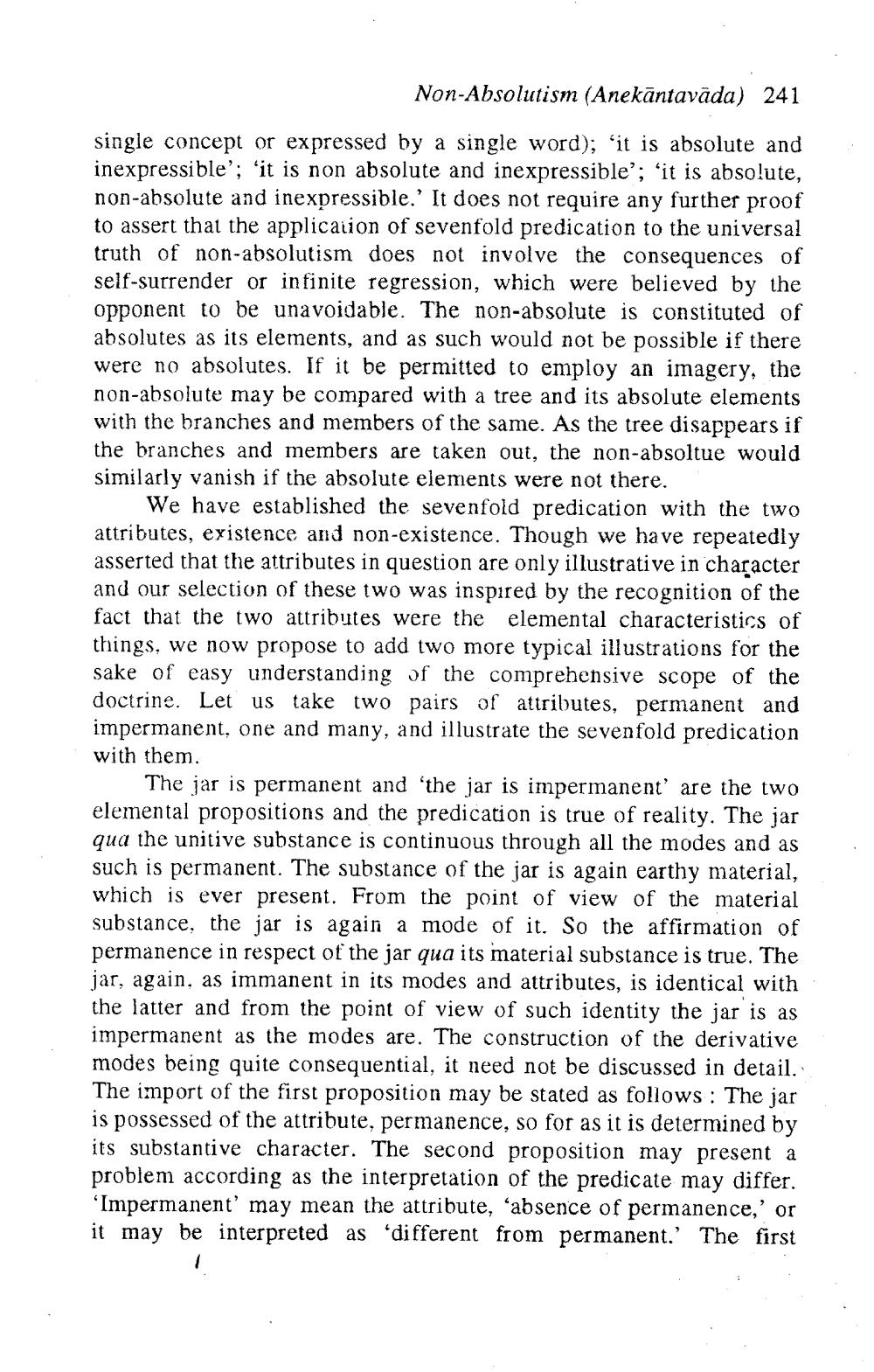________________
Non-Absolutism (Anekāntavāda) 241
single concept or expressed by a single word); “it is absolute and inexpressible'; 'it is non absolute and inexpressible'; 'it is absolute, non-absolute and inexpressible.' It does not require any further proof to assert that the application of sevenfold predication to the universal truth of non-absolutism does not involve the consequences of self-surrender or infinite regression, which were believed by the opponent to be unavoidable. The non-absolute is constituted of absolutes as its elements, and as such would not be possible if there were no absolutes. If it be permitted to employ an imagery, the non-absolute may be compared with a tree and its absolute elements with the branches and members of the same. As the tree disappears if the branches and members are taken out, the non-absoltue would similarly vanish if the absolute elements were not there.
We have established the sevenfold predication with the two attributes, existence and non-existence. Though we have repeatedly asserted that the attributes in question are only illustrative in character and our selection of these two was inspired by the recognition of the fact that the two attributes were the elemental characteristics of things, we now propose to add two more typical illustrations for the sake of easy understanding of the comprehensive scope of the doctrine. Let us take two pairs of attributes, permanent and impermanent, one and many, and illustrate the sevenfold predication with them.
The jar is permanent and 'the jar is impermanent are the two elemental propositions and the predication is true of reality. The jar qua the unitive substance is continuous through all the modes and as such is permanent. The substance of the jar is again earthy material, which is ever present. From the point of view of the material substance, the jar is again a mode of it. So the affirmation of permanence in respect of the jar qua its material substance is true. The jar, again, as immanent in its modes and attributes, is identical with the latter and from the point of view of such identity the jar is as impermanent as the modes are. The construction of the derivative modes being quite consequential, it need not be discussed in detail. The import of the first proposition may be stated as follows: The jar is possessed of the attribute, permanence, so for as it is determined by its substantive character. The second proposition may present a problem according as the interpretation of the predicate may differ. 'Impermanent' may mean the attribute, 'absence of permanence,' or it may be interpreted as 'different from permanent. The first




